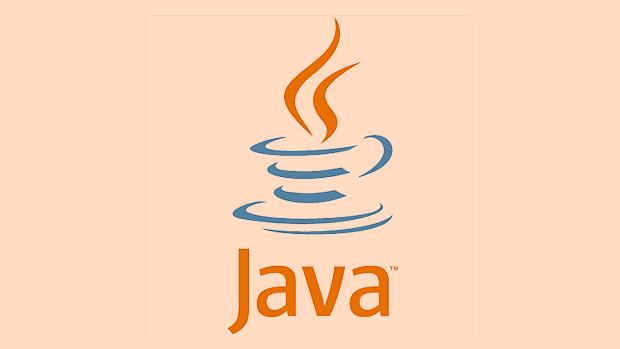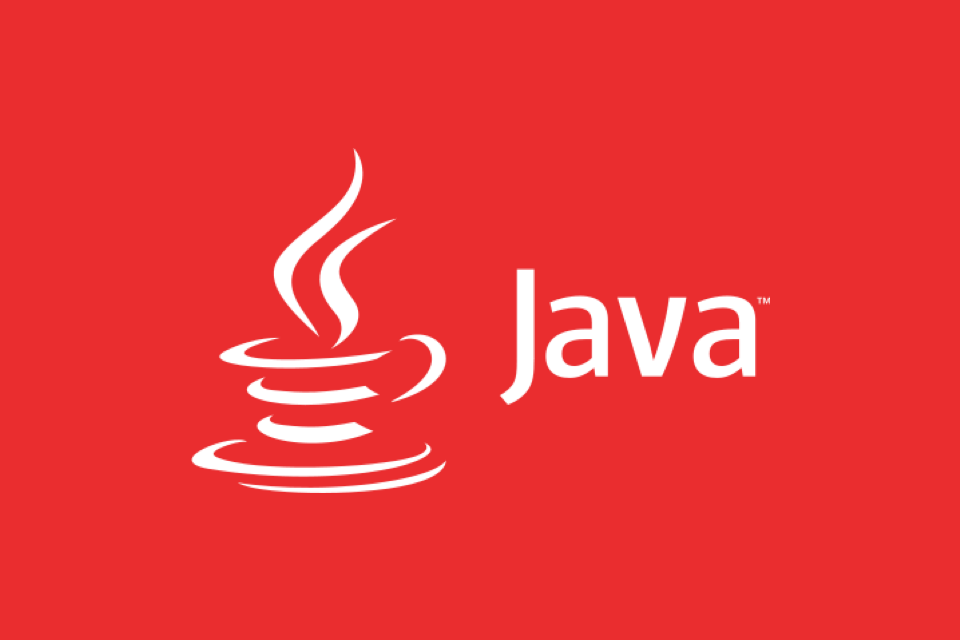VS Code is a powerful, lightweight alternative for modern Java development. 1. Set up Java by installing JDK 11 , VS Code, and the Java Extension Pack for full tooling support. 2. Benefit from intelligent code editing, real-time error checking, refactoring, and seamless Maven/Gradle integration. 3. Use built-in debugging with breakpoints, variable inspection, and hot code replace. 4. Run and debug JUnit tests directly with inline results and navigation. 5. Enhance Spring Boot development with dedicated extensions for project generation, server management, and endpoint debugging. 6. Leverage Dev Containers and GitHub Codespaces for consistent, cloud-native, containerized environments. 7. Enjoy faster startup, lower memory usage, and extensive extensibility for Git, databases, REST clients, and code formatting. VS Code is ideal for Spring Boot, microservices, containerized workflows, and developers seeking a fast, modern Java IDE experience.

Modern Java development isn’t just about writing code — it’s about using the right tools to streamline your workflow, get smart coding assistance, and run applications efficiently. While IntelliJ IDEA and Eclipse have long dominated the Java IDE space, Visual Studio Code (VS Code) has emerged as a lightweight, flexible, and powerful alternative — especially for developers who value speed, customization, and integration with modern tooling.

Here’s how VS Code has evolved into a solid choice for modern Java development.
1. Setting Up Java in VS Code
Getting started with Java in VS Code is straightforward:

- Install the Java Development Kit (JDK): You’ll need JDK 11 or higher (LTS versions like 17 or 21 are recommended).
- Install VS Code: Download from code.visualstudio.com.
-
Install the Java Extension Pack: This official Microsoft extension bundle includes everything you need:
- Language Support for Java
- Debugger for Java
- Test Runner for Java
- Maven/Gradle integration
- Project Manager for Java
Once installed, VS Code automatically detects your JDK and sets up the Java Runtime Environment.
? Tip: Use tools like SDKMAN! (Linux/macOS) or Amazon Corretto (cross-platform) to manage multiple JDK versions easily.

2. Key Features That Make VS Code Competitive
? Intelligent Code Editing
Thanks to Eclipse JDT (Java Development Tools) running under the hood via the Language Support for Java extension, VS Code offers:
- Code completion
- Quick fixes and refactorings (rename, extract method)
- Real-time error checking
- Go-to-definition and find references
It feels surprisingly close to a full IDE, but in a lightweight editor.
? Build Tool Integration
Whether you use Maven or Gradle, VS Code provides:
- A visual project explorer
- Task runners in the Command Palette (
Ctrl Shift P) - Dependency management views
- Easy execution of build goals (e.g.,
clean,compile,test)
You can even generate new Maven projects using archetypes directly from the command palette.
? Debugging Made Simple
The built-in debugger supports:
- Breakpoints
- Variable inspection
- Step-through execution
- Hot code replace (in many cases)
Launch configurations are defined in launch.json, but often VS Code auto-generates them. Just click the "Run" button or press F5.
? Testing Support
With the Test Runner for Java:
- View all JUnit (4 or 5) tests in a sidebar
- Run or debug individual tests
- See pass/fail results inline
- Navigate failures quickly
This makes TDD workflows smooth and fast.
3. Working with Spring Boot and Microservices
VS Code shines when working with Spring Boot, a cornerstone of modern Java development.
Install these additional extensions for enhanced Spring support:
-
Spring Boot Tools (by Pivotal): Provides code completion for
application.properties, auto-detection of Spring projects, and embedded server management. - Spring Initializr Java Support: Generate new Spring Boot projects with selected dependencies (Web, Data JPA, Security, etc.) without leaving the editor.
Once your app is running:
- The Spring Dashboard shows active Boot apps
- You can start/stop services from within VS Code
- Live variables and endpoints are visible during debugging
Example: Generate a REST controller → run the app → hit breakpoints on HTTP requests — all inside VS Code.
4. Dev Containers and Cloud-Native Development
One of the biggest advantages of VS Code in modern workflows is its integration with Dev Containers (via Docker).
You can:
- Define a consistent dev environment in a
Dockerfileordevcontainer.json - Include JDK, Maven, PostgreSQL, Redis — everything your app needs
- Work entirely inside a container with full IntelliSense and debugging
This ensures your local setup matches production, eliminating "it works on my machine" issues.
Plus, with GitHub Codespaces, you can spin up a full Java dev environment in the cloud — no setup required.
5. Lightweight, Fast, and Extensible
Compared to heavier IDEs:
- VS Code starts faster
- Uses less memory
- Feels snappier on large projects (especially with good
.gitignoreandsettings.jsontuning) - Integrates seamlessly with Git, REST clients, databases (via extensions), and CI/CD pipelines
And because it’s extensible:
- Add Markdown preview for documentation
- Use the REST Client extension to test APIs
- Connect to databases with Database Client extensions
- Format code with Spotless or Google Java Format
Final Thoughts
VS Code may not replace full-featured IDEs for every Java use case (like deep refactoring across huge codebases), but for modern, cloud-native, Spring-based, or microservices-oriented Java development, it’s more than capable.
It’s especially great for:
- Developers already using VS Code for other languages
- Teams adopting lightweight, containerized workflows
- Learners and students getting started with Java
With the right extensions and a bit of setup, VS Code delivers a modern, efficient, and enjoyable Java development experience — proving you don’t always need a heavyweight IDE to write great Java code.
Basically, if you're building Spring Boot apps, using containers, or want a clean, fast editor with smart Java support, give VS Code a serious try.
The above is the detailed content of Modern Java Development with Visual Studio Code. For more information, please follow other related articles on the PHP Chinese website!

Hot AI Tools

Undress AI Tool
Undress images for free

Undresser.AI Undress
AI-powered app for creating realistic nude photos

AI Clothes Remover
Online AI tool for removing clothes from photos.

Clothoff.io
AI clothes remover

Video Face Swap
Swap faces in any video effortlessly with our completely free AI face swap tool!

Hot Article

Hot Tools

Notepad++7.3.1
Easy-to-use and free code editor

SublimeText3 Chinese version
Chinese version, very easy to use

Zend Studio 13.0.1
Powerful PHP integrated development environment

Dreamweaver CS6
Visual web development tools

SublimeText3 Mac version
God-level code editing software (SublimeText3)

Hot Topics
 Differences Between Callable and Runnable in Java
Jul 04, 2025 am 02:50 AM
Differences Between Callable and Runnable in Java
Jul 04, 2025 am 02:50 AM
There are three main differences between Callable and Runnable in Java. First, the callable method can return the result, suitable for tasks that need to return values, such as Callable; while the run() method of Runnable has no return value, suitable for tasks that do not need to return, such as logging. Second, Callable allows to throw checked exceptions to facilitate error transmission; while Runnable must handle exceptions internally. Third, Runnable can be directly passed to Thread or ExecutorService, while Callable can only be submitted to ExecutorService and returns the Future object to
 Asynchronous Programming Techniques in Modern Java
Jul 07, 2025 am 02:24 AM
Asynchronous Programming Techniques in Modern Java
Jul 07, 2025 am 02:24 AM
Java supports asynchronous programming including the use of CompletableFuture, responsive streams (such as ProjectReactor), and virtual threads in Java19. 1.CompletableFuture improves code readability and maintenance through chain calls, and supports task orchestration and exception handling; 2. ProjectReactor provides Mono and Flux types to implement responsive programming, with backpressure mechanism and rich operators; 3. Virtual threads reduce concurrency costs, are suitable for I/O-intensive tasks, and are lighter and easier to expand than traditional platform threads. Each method has applicable scenarios, and appropriate tools should be selected according to your needs and mixed models should be avoided to maintain simplicity
 Understanding Java NIO and Its Advantages
Jul 08, 2025 am 02:55 AM
Understanding Java NIO and Its Advantages
Jul 08, 2025 am 02:55 AM
JavaNIO is a new IOAPI introduced by Java 1.4. 1) is aimed at buffers and channels, 2) contains Buffer, Channel and Selector core components, 3) supports non-blocking mode, and 4) handles concurrent connections more efficiently than traditional IO. Its advantages are reflected in: 1) Non-blocking IO reduces thread overhead, 2) Buffer improves data transmission efficiency, 3) Selector realizes multiplexing, and 4) Memory mapping speeds up file reading and writing. Note when using: 1) The flip/clear operation of the Buffer is easy to be confused, 2) Incomplete data needs to be processed manually without blocking, 3) Selector registration must be canceled in time, 4) NIO is not suitable for all scenarios.
 Best Practices for Using Enums in Java
Jul 07, 2025 am 02:35 AM
Best Practices for Using Enums in Java
Jul 07, 2025 am 02:35 AM
In Java, enums are suitable for representing fixed constant sets. Best practices include: 1. Use enum to represent fixed state or options to improve type safety and readability; 2. Add properties and methods to enums to enhance flexibility, such as defining fields, constructors, helper methods, etc.; 3. Use EnumMap and EnumSet to improve performance and type safety because they are more efficient based on arrays; 4. Avoid abuse of enums, such as dynamic values, frequent changes or complex logic scenarios, which should be replaced by other methods. Correct use of enum can improve code quality and reduce errors, but you need to pay attention to its applicable boundaries.
 How Java ClassLoaders Work Internally
Jul 06, 2025 am 02:53 AM
How Java ClassLoaders Work Internally
Jul 06, 2025 am 02:53 AM
Java's class loading mechanism is implemented through ClassLoader, and its core workflow is divided into three stages: loading, linking and initialization. During the loading phase, ClassLoader dynamically reads the bytecode of the class and creates Class objects; links include verifying the correctness of the class, allocating memory to static variables, and parsing symbol references; initialization performs static code blocks and static variable assignments. Class loading adopts the parent delegation model, and prioritizes the parent class loader to find classes, and try Bootstrap, Extension, and ApplicationClassLoader in turn to ensure that the core class library is safe and avoids duplicate loading. Developers can customize ClassLoader, such as URLClassL
 Exploring Different Synchronization Mechanisms in Java
Jul 04, 2025 am 02:53 AM
Exploring Different Synchronization Mechanisms in Java
Jul 04, 2025 am 02:53 AM
Javaprovidesmultiplesynchronizationtoolsforthreadsafety.1.synchronizedblocksensuremutualexclusionbylockingmethodsorspecificcodesections.2.ReentrantLockoffersadvancedcontrol,includingtryLockandfairnesspolicies.3.Conditionvariablesallowthreadstowaitfor
 Handling Common Java Exceptions Effectively
Jul 05, 2025 am 02:35 AM
Handling Common Java Exceptions Effectively
Jul 05, 2025 am 02:35 AM
The key to Java exception handling is to distinguish between checked and unchecked exceptions and use try-catch, finally and logging reasonably. 1. Checked exceptions such as IOException need to be forced to handle, which is suitable for expected external problems; 2. Unchecked exceptions such as NullPointerException are usually caused by program logic errors and are runtime errors; 3. When catching exceptions, they should be specific and clear to avoid general capture of Exception; 4. It is recommended to use try-with-resources to automatically close resources to reduce manual cleaning of code; 5. In exception handling, detailed information should be recorded in combination with log frameworks to facilitate later
 How does a HashMap work internally in Java?
Jul 15, 2025 am 03:10 AM
How does a HashMap work internally in Java?
Jul 15, 2025 am 03:10 AM
HashMap implements key-value pair storage through hash tables in Java, and its core lies in quickly positioning data locations. 1. First use the hashCode() method of the key to generate a hash value and convert it into an array index through bit operations; 2. Different objects may generate the same hash value, resulting in conflicts. At this time, the node is mounted in the form of a linked list. After JDK8, the linked list is too long (default length 8) and it will be converted to a red and black tree to improve efficiency; 3. When using a custom class as a key, the equals() and hashCode() methods must be rewritten; 4. HashMap dynamically expands capacity. When the number of elements exceeds the capacity and multiplies by the load factor (default 0.75), expand and rehash; 5. HashMap is not thread-safe, and Concu should be used in multithreaded







